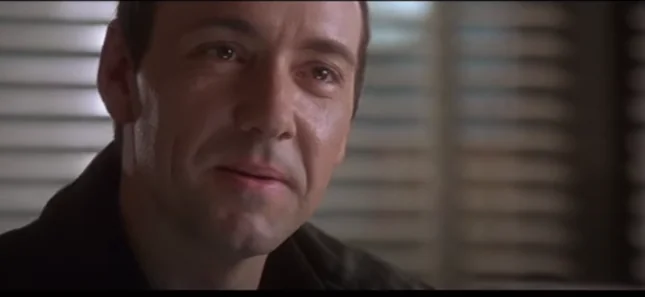Unraveling the Mystery: How to Craft a Killer Ending for Your Murder Mystery Novel

Murder mysteries have captivated readers for centuries with their twists, turns, and nail-biting suspense. It’s a delicate balancing act to keep the reader engaged, to plant enough clues to keep them guessing, but not so many that the solution is obvious. But perhaps the most important aspect of a murder mystery is the ending. It’s where all the pieces of the puzzle come together, the final piece falls into place, and the villain is revealed. A great ending can make or break the success of your murder mystery novel, so how can you craft one that will leave your readers stunned? In this article, we will explore the key elements to a successful murder mystery ending and offer tips on how to write one that will leave your audience on the edge of their seat.
The Heart of the Matter: Understanding the Core of a Murder Mystery
A murder mystery is centered around a victim and a crime. The victim is usually someone well-known or well-liked, and their death sets off a chain of events that leads to the investigation. The investigation is the key to solving the crime and finding the killer. Throughout the investigation, suspects are questioned, evidence is collected, and motives are uncovered. Each suspect has a motive for wanting the victim dead, and it is the job of the detective or protagonist to uncover the truth and determine who the killer is. The mystery of who committed the crime and why is what drives the story forward, making the investigation the heart of the murder mystery.
Readers and Tropes Drive Mystery Endings
Readers have expectations about mysteries. In order to give readers a satisfying mystery, your mystery needs certain elements.
The creative enjoyment of writing, comes from meeting those expectations while telling a unique story. All the fun and games of writing a mystery must come to an end before the reveal. When your story reaches the reveal, your reader feels your contract with them is over.
Wrap Up Story Threads Before the Reveal
What that expectation means for you as a writer, is that your story ends when your sleuth finally reveals the killer. No long epilogues, no wrapping up subplots or story threads. As far as the reader is concerned the mystery is solved and the story is over.
You may have several subplots that created tension and interest as your mystery progressed. Bring each of your subplots to a conclusion before the reveal. A love interest says yes or no, a colleague who keeps attempting to thwart your sleuth gets her comeuppance, the sidekick graduates from his photography course. All of these threads need an end before you arrive at the final reveal.
Saving the reveal for the end of the story is one of the ways mysteries can differ from other genres. Once you present the reveal, the story is over in the mind of the reader.
A quick closing after the reveal is the best way to bring your mystery novel to a conclusion. Any television mystery series can provide you with a model of how to accomplish this quick ending—Midsomer Murders, Murder She Wrote.
Your reader follows your sleuth through all the speculations and possible outcomes. The psychological power of the reveal as closure creates a feeling of pleasure. That feeling is what you want to linger in the reader’s mind when they finish. Don’t dilute that feeling by carrying on.
Tying Up the Loose Ends: Wrapping Up Your Murder Mystery with a Bow
The key to a great murder mystery ending is to wrap up all the loose ends and tie up the story in a neat, satisfying package. Here are some key elements to consider when crafting your ending:
- Suspicious Suspects: As the investigation comes to a close, it’s time to reveal the real villain. The suspects who seemed the most suspicious should be given a chance to explain themselves, but in the end, the real villain should be someone who was not on the radar, or at least not a top suspect.
- The Real Villain: The revelation of the real villain should come as a surprise to the reader, but with the benefit of hindsight, they should be able to see that the clues were there all along.
- Clues There All Along: The murderer’s identity should be hinted at through clues that were present throughout the book, but went unnoticed until the big reveal.
- The Detective’s Skills: The detective’s skills should play a big part in solving the crime and revealing the murderer. They should use their wit, intelligence, and attention to detail to uncover the truth and bring the killer to justice.
By incorporating these elements into your ending, you’ll create a satisfying conclusion to your murder mystery that will leave your readers feeling fulfilled and impressed.
Satisfying the Sleuths: Giving Mystery Readers What They Want
Mystery readers want to be entertained, captivated, and, most of all, challenged. They want to be kept on their toes, guessing and second-guessing until the very end. To give them what they want, here are some elements to consider:
- Puzzled Until the End: Keep your readers in suspense until the very end of the book. They should be guessing and re-evaluating their theories right up until the murderer is revealed.
- I Should Have Known: Once the murderer is revealed, the reader should be able to look back on the story and say, “I should have known!” They should be able to see how the clues were there all along, but they were cleverly disguised.
- The Real Villain: The real villain should be a surprising twist that the reader did not see coming. It should be someone they never suspected or only briefly considered.
- Your Detective as a Hero: Your detective or protagonist should be a hero in their own right, using their skills and intuition to solve the crime and bring the murderer to justice. They should be clever, persistent, and resourceful, making them a worthy adversary for the murderer.
By giving mystery readers what they want, you’ll craft a thrilling and engaging murder mystery that will keep them guessing until the very end.
Mystery readers are ardent fans. When you meet their expectations, they will help you promote your book by telling other readers about your mystery.
If you are a new author, it’s especially important to give readers the satisfaction they expect from a mystery. Once your sleuth has discovered the truth, it’s time to wrap up your story. For new authors, it’s especially important to meet those expectations. When readers like your story, they will want more. That’s a satisfying feeling for a first-time author.
Satisfy Your Reader
Give your reader the reward they want from reading your mystery. To give your reader the best satisfaction with your mystery help them get to the conclusion.
- Tie up loose ends before the reveal. In many novel formats the conclusion can tie up many subplots and emotional challenges for the main character. Mystery readers want the reveal and then they are done. Tie up subplots and love interests before the reveal. Wrapping up those loose ends before the reveal creates tension and keeps the reader reading.
- Dastardly deeds before the reveal. If your sleuth and the reader know who the killer is, don’t prolong the ending by creating a new sequence where the killer threatens the love interest or otherwise creates an entire new episode in your mystery. Even though it may appear you ratchet up the tension, you don’t. The tension for the reader in a mystery is solving the puzzle. Once the killer is revealed, end the story.
- Make the reveal the high point. Making the reveal the high point of your mystery will keep you from inserting more action sequences afterwards. Get the killer to their just rewards like imprisonment as quickly after his confrontation with your sleuth.
- Finish the story. Bring your story to a quick end after the reveal. Let the story be. It should come to a natural conclusion so your readers enjoy a sense of completion at the end.
Bringing your mystery to a close after the reveal gives your reader a strong sense of satisfaction. Bring all the enjoyment they felt as they puzzled over the solution to a satisfying conclusion. Give your reader one final glimpse of your sleuth and then let go. The story has ended.



